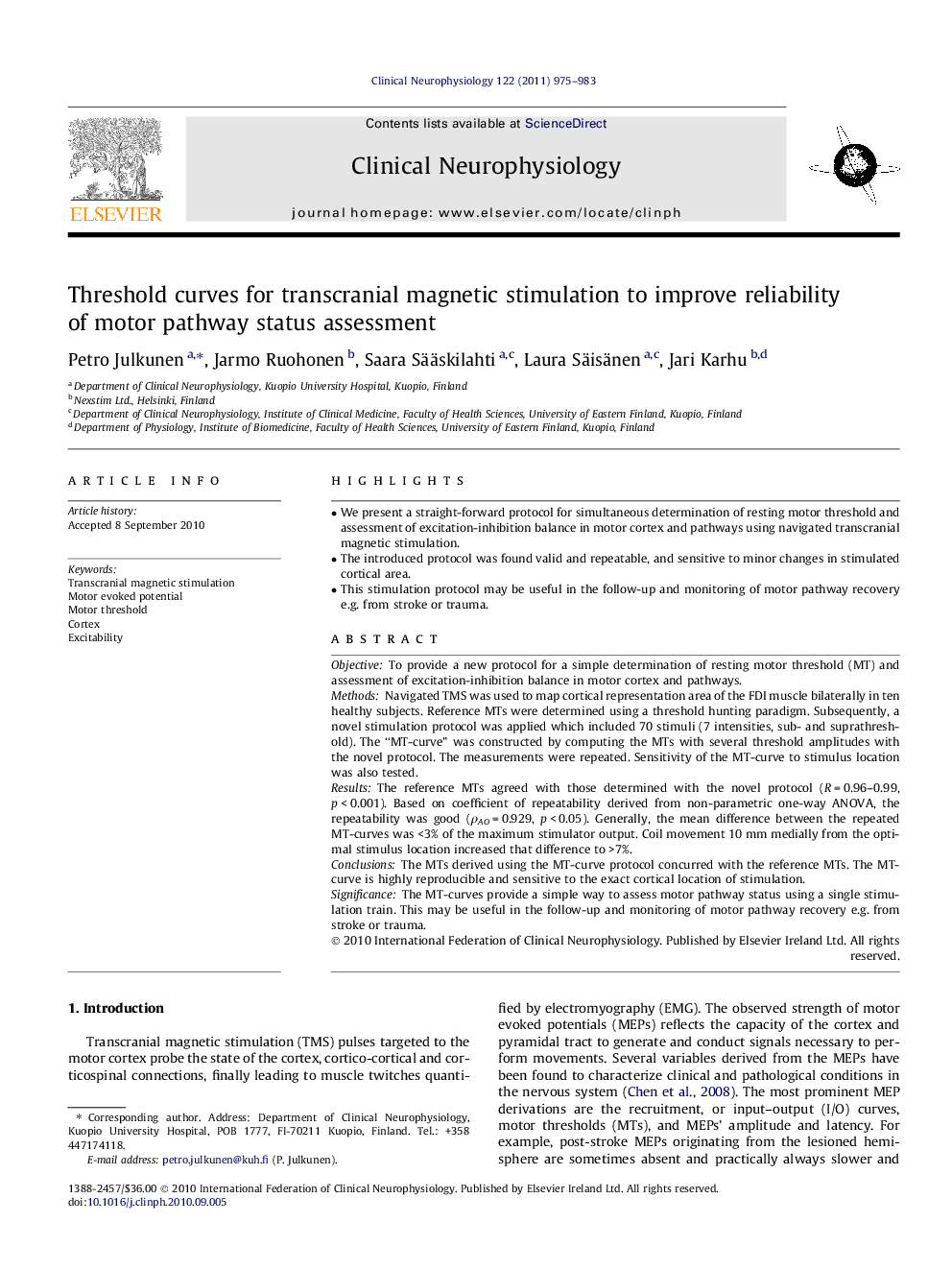| Article ID | Journal | Published Year | Pages | File Type |
|---|---|---|---|---|
| 3044476 | Clinical Neurophysiology | 2011 | 9 Pages |
ObjectiveTo provide a new protocol for a simple determination of resting motor threshold (MT) and assessment of excitation-inhibition balance in motor cortex and pathways.MethodsNavigated TMS was used to map cortical representation area of the FDI muscle bilaterally in ten healthy subjects. Reference MTs were determined using a threshold hunting paradigm. Subsequently, a novel stimulation protocol was applied which included 70 stimuli (7 intensities, sub- and suprathreshold). The “MT-curve” was constructed by computing the MTs with several threshold amplitudes with the novel protocol. The measurements were repeated. Sensitivity of the MT-curve to stimulus location was also tested.ResultsThe reference MTs agreed with those determined with the novel protocol (R = 0.96–0.99, p < 0.001). Based on coefficient of repeatability derived from non-parametric one-way ANOVA, the repeatability was good (ρAO = 0.929, p < 0.05). Generally, the mean difference between the repeated MT-curves was <3% of the maximum stimulator output. Coil movement 10 mm medially from the optimal stimulus location increased that difference to >7%.ConclusionsThe MTs derived using the MT-curve protocol concurred with the reference MTs. The MT-curve is highly reproducible and sensitive to the exact cortical location of stimulation.SignificanceThe MT-curves provide a simple way to assess motor pathway status using a single stimulation train. This may be useful in the follow-up and monitoring of motor pathway recovery e.g. from stroke or trauma.
► We present a straight-forward protocol for simultaneous determination of resting motor threshold and assessment of excitation-inhibition balance in motor cortex and pathways using navigated transcranial magnetic stimulation. ► The introduced protocol was found valid and repeatable, and sensitive to minor changes in stimulated cortical area. ► This stimulation protocol may be useful in the follow-up and monitoring of motor pathway recovery e.g. from stroke or trauma.
